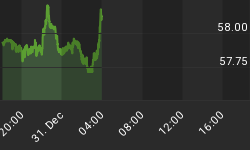I first wrote about the "Deleveraging Deception" back in September of 2010. Unfortunately, those that would have you believe the economy has paid down its excessive debt levels are still at work trying to deceive you. But here's the truth.
In order to perpetuate their deception that the economy has deleveraged, many Wall Street pundits often site the statistic that Household Debt Service payments as a percentage of disposable income has fallen to 9.2%, the lowest level since 1980 and down from 13.18% at the peak of the Great Recession.
But once again the analysis offered by perma-bulls is marked by sophistry and misinterpretation.
First off, the numerator of the equation has been massively distorted by the lowest consumer borrowing rates in history; provided to us courtesy of the Federal Reserve. In truth, the nominal level of Household debt has only contracted by a meager 6.3% (from $13.96 trillion in early 2008, to $13.08 trillion as of Q3 last year). Therefore, if we strip out the record-low interest paid on debt and just concentrate on Household debt as a percentage of disposable income, the real picture becomes clearer. Household debt as a percentage of disposable income is 103%, as of the latest reading. Taken into perspective, it was 128% at the start of the Great Recession. However, it was just 78% in the year 2000, and just 56% in 1980.
What's worse, the aggregate level of debt in the economy (taking into consideration all public and private debt outstanding) is 250% of GDP. While that is the same level it was at the start of the Credit Crisis in 2007, it is more than $6 trillion higher in terms of the absolute level.
If we look at some key sectors individually, it is clear to see that the nominal level of debt in the economy has vastly increased during the last 6 years. Since December 2007; business debt is up $2.4 trillion, the Fed's balance sheet has increased by $3.3 trillion, and the National debt has exploded by $7.2 trillion. Only the banking system has shown significant deleveraging.
It is absolutely crucial to look at nominal debt levels at this time because Household income and GDP have been artificially and temporarily boosted by unsustainably-low interest rates. Rising rates and falling economic growth will put significant pressure on these key debt metrics, as our real addictions to debt become perilously revealed.
A rapidly slowing economy will quickly increase the amount of red ink for the Treasury. In fact, the Treasury Department said just last week that it expects to issue $284 billion in net marketable debt for the January-March period. That is $19 billion more than the department estimated in November of last year. This means the deficit for calendar year Q1 2014 is already $120 billion higher than the deficit for the entire year of 2007 (the year prior to the Great Recession). And, even according to the rosy predictions of the CBO, this year's deficit will be an incredible $514 billion!
What is especially silly is that adding over a half trillion dollars to the debt in one year is being lauded by Wall Street and the main stream media as a sign of fiscal restraint.
The sad truth is our economy carries more debt today than at any other time in our nation's history. Taken in aggregate, the nominal level of debt has simply skyrocketed and whatever artificial economic growth the government has been able to manufacture is merely sustaining debt ratios near all-time highs. Therefore, more chaos awaits investors once the Fed either voluntarily or involuntarily loses control over interest rates, causing the denominator of economic growth to fall apart.
















